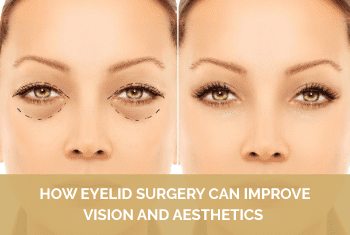Facelift surgery has long been a popular option for individuals looking to reduce visible signs of aging and restore a youthful appearance. Yet, despite its widespread use, many myths and misconceptions persist, deterring potential patients from taking the plunge. To set the record straight, we’re breaking down 10 common facelift myths.
Myth 1: Facelifts are only for older individuals
It’s often believed that facelifts are exclusively for people in their 60s or older. This is far from the truth. While older patients frequently seek facelifts, individuals in their 40s and 50s also benefit from the procedure. Some even opt for “mini facelifts” to target specific areas like the cheeks or jawline, addressing early signs of aging. The key factor isn’t age—it’s whether the patient has sagging skin or loose facial muscles that they want to address.
Myth 2: Facelifts are painful and require a long recovery time
Advances in surgical techniques have made facelift procedures far less painful than they were years ago. Surgeons now use refined methods that minimize discomfort and shorten recovery times. Most patients experience mild swelling or bruising, which subsides within a week or two. Many return to work and regular activities within 10–14 days. Pain management during and after the procedure is a priority, ensuring the process is as comfortable as possible.
Myth 3: Facelifts look unnatural and obvious
There’s a common belief that facelifts can leave people with an unnatural or overly tight appearance. Modern facelift techniques focus on creating natural and subtle results by gently lifting the skin and underlying muscles, rather than overly tightening them. Board-certified plastic surgeons, like Dr. Kitto in Richmond, VA, specialize in tailoring the procedure to emphasize each patient’s unique features, leaving them looking rejuvenated, not artificial.
Myth 4: Non-surgical options provide the same results as a facelift
While non-surgical treatments like Botox and dermal fillers can enhance your appearance, they don’t deliver the same long-lasting results as a surgical facelift. Non-surgical options are effective at smoothing wrinkles and providing temporary volume but cannot address significant sagging of the skin or deeper facial muscles. Facelift surgery offers more comprehensive and durable improvements, often lasting 10 years or more.
Myth 5: Facelifts are only for women
An increasing number of men are undergoing facelifts to maintain a youthful and confident appearance. According to the American Society of Plastic Surgeons, facelift procedures for men have grown steadily in recent years. Men often seek facelifts to reduce sagging skin along the neck and jawline while maintaining strong, masculine contours. The procedure is tailored to their unique facial structure for natural-looking results.
Myth 6: Facelift surgery is a one-size-fits-all procedure
No two faces are exactly alike, and no two facelifts are either. Modern facelifts are highly customizable. Surgeons assess a patient’s anatomy, aging patterns, and goals to create a tailored plan. Patients can choose from a variety of options, such as full facelifts, mini facelifts, or focused procedures targeting specific areas like the neck or mid-face. The customization ensures the results are as individualized as the patients who undergo them.
Myth 7: Facelift results are permanent
While facelifts deliver long-term benefits, they don’t stop the natural aging process. Over time, your skin and muscles will continue to age. However, the procedure sets you back years in terms of appearance, and you’ll always look younger than you would have without it. Maintaining a healthy lifestyle, skincare routine, and follow-up appointments with your surgeon can help extend the longevity of your results.
Myth 8: Facelifts do not improve skin quality
Some believe facelifts simply tighten the skin without enhancing its quality. Though the primary goal of a facelift is to address sagging, it indirectly contributes to a more youthful appearance by improving overall skin tension. Pairing facelifts with complementary treatments such as chemical peels, dermabrasion, or laser therapy can further enhance skin quality, improving texture, tone, and hydration. This combination gives patients a comprehensive anti-aging solution.
Myth 9: Facelift surgery is not safe
Facelift surgery, like any medical procedure, carries some risks. However, when performed by a board-certified plastic surgeon in a licensed facility, the procedure is extremely safe. Surgeons carefully screen candidates to ensure they’re healthy enough for surgery. A qualified plastic surgeon uses advanced techniques and tools that minimize risks such as infection or adverse reactions. Dr. Kitto, for example, emphasizes patient safety through extensive pre-operative evaluations and post-operative care plans.
Myth 10: Facelifts are purely cosmetic and offer no health benefits
Facelifts are often viewed as solely cosmetic, but the benefits go beyond aesthetics. Many patients report improved self-esteem and confidence after the procedure. For some, the psychological boost of looking refreshed can improve their overall mental well-being. Additionally, healthier skin tension post-surgery can lead to better facial muscle support, reducing strain on the neck and jawline, which can have practical benefits in daily life.
Take the Next Step Toward a More Confident You
Understanding what facelifts can and cannot do empowers you to make informed decisions about your appearance. If you’ve been considering facelift surgery, consult a board-certified surgeon to discuss your goals and options. For patients seeking plastic surgery in Richmond and the surrounding areas, Dr. Kitto provides consultations to determine the best approach for achieving natural, youthful results.
Schedule your consultation today and take the first step toward your transformation—contact us now to learn more about facelift surgery in Richmond and schedule your appointment by calling (804) 294-1777.



